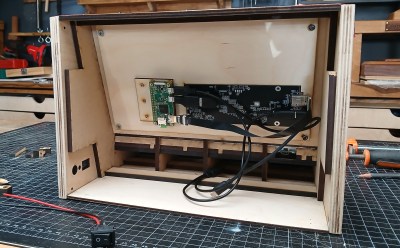A laptop is one of the greatest tools at the disposal of a hacker. They come in all manner of shapes and sizes with all manner of features. But perhaps the greatest limit held by all laptops is their chiclet keyboard. While certainly serviceable, a proper mechanical keyboard will always reign supreme, which is why [flurples] built a laptop around a mechanical keyboard.
Such a keyboard could not fit inside any normal laptop, so a custom machined case was in order. The starting point was a standard Framework Laptop 13. Its open source documentation certainly helped the project, but numerous parts such as the audio board and fingerprint sensor are not documented making for a long and tedious process. But the resulting machined aluminum case looks at least as good as a stock Framework chassis, all be it, quite a bit thicker.
Continue reading “Making A Laptop With A Mechanical Keyboard”


















